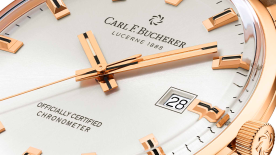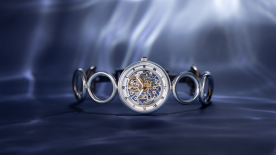Pacific Coast Highway. Destination: Newport Beach. Saturday 29 July. The traffic is dense but tolerable. On my right, a succession of fabulous houses clinging to the cliff; on my left, a string of small restaurants that look out onto the Bay. Out on the water, a few scattered paddleboards and sailing boats look fragile alongside the big yachts moored to the jetties of Lido Isle. Suddenly I hear a throaty roar from behind, the product of some powerful but probably unsubtle vehicle. In the rear-view mirror, I recognise its distinctive shape, and the snake on the hood. It’s a Shelby Mustang!
While there’s no shortage of nice cars in Orange County, it’s rare to see a Shelby. And this is my favourite model: white with blue racing stripes.
Riding shotgun beside me, Gabriel, who enjoys the game of spotting the best car, concedes defeat. I shouted “Shelby!” before him. Then he asks the question that sowed the seed for this article: “Daddy, why does it have stripes?”
Hmm. Good question. Why does it have stripes? And why are stripes particularly associated with American sports cars?
Pending a more in-depth investigation of the question, I watch the Ford as it overtakes me. I don’t know why, but it makes me think of Michel Vaillant, my favourite comic book hero. Immediately, I picture the French racing driver, his friend Steve Watson and all the blue and white Vaillante racing cars I used to admire when I was Gabriel’s age. I love Vaillantes, particularly those from the 1960s and 70s, with their blue livery and white stripes!
But let’s get back to our own racing stripes. They began with a regulation imposed by the FIA (Fédération Internationale Automobile) in the 1950s, which assigned different colours to racing cars according to their nationality: red for Italy, green for Great Britain, yellow for Belgium and silver for Germany. The French got blue, and the Americans got white. But the Americans were also granted a small exception: if the car’s chassis was visible (which was the case at the time), it could be painted blue.
At the Le Mans 24-hour race in 1950, Briggs Cunningham, a racing driver and owner of his own racing team, came up with an idea to make his racing Cadillacs stand out. He would paint them white, and add two blue stripes running from the front to the back of the car. Racing stripes were born! In fact, they were originally known as Cunningham Stripes.
Did they make the cars go faster? Probably not. Briggs never won Le Mans, although he did notch up a string of victories in the USA. However, legend has it that some drivers realised that the stripes helped them to follow the track in bad weather.
In a few years, stripes gradually began to take over the world.
And that’s where our story returns to the Ford Shelby that has just overtaken me.
The Mustang was launched in 1964. It was an immediate success, and Ford quickly added a “souped-up” model to the range. Texan driver Carroll Shelby was brought in, and his team developed a super-powerful Mustang – the GT350 – with an engine that produced over 300 horsepower.
But they wanted some way of making this car recognisable, something that would differentiate it from other Mustangs. It was easy enough to add a few sporty accessories, but a designer who was also a fan of the car had an idea that would change the face of the (small) world of the racing car; he suggested painting the Shelby white with blue stripes.
That was it! Racing stripes had made the leap from the racing circuit to the car dealership. And the trend continued to accelerate.
There followed the white and blue Shelby Cobras, as well as the blue and white version, the Martini Racing Shelbys and the Porsche Gulf. The humble bumble bee became a yellow Chevy Camaro with black stripes. There’s an ad from 1967 that shows a petrol blue E-type Jag sporting white stripes. Further racing models would be spotted, in British Racing Green with white stripes.
Even France jumped on the bandwagon.
Do you remember the Gordinis? Renaults modified by performance tuner Amédée Gordini? There’s one model in particular that has a special place in his creations: the R8. It won the Rally in Monte Carlo, but also in Australia, Spain and South Africa. Fans all over the world were able to admire its iconic colours: French blue with two thin white stripes.
When Ford finally beat Ferrari to win Le Mans, it was with a sky blue GT40 with Gulf Orange stripes! And when Ford relaunched its GT40 supercar, it came in red, grey or yellow... with racing stripes.
So, now you know how a snazzy paint job changed the face of motor racing. But it also inspired watchmakers, another group who are partial to a finely tuned engine.
One obvious example is the stripes on the dial of the TAG Heuer Monaco, but today I’d like to talk about a brand that’s really into cars. It’s a brand that, for over 30 years, has invested in classic car rallies, and whose owner possesses a fine collection of Porsches. His garage contains some superb examples, including a 1954 Speedster, a 1973 911, and a Carrera RS from 1974.
I give you the Chopard Mille Miglia Classic Chronograph Racing Stripes, a model exclusive to the US market, although it will appeal to many on both sides of the pond.
Why Chopard?
I have a special relationship with this company. Many years ago I had the privilege of meeting the entire Scheufele family when they were recruiting a Human Resources Director for Chopard. Although I didn’t get the job, I harbour no hard feelings. Absolutely none at all. Zero.
At the time I was passionate about watchmaking, and I came to know Chopard as more than just a jeweller.
The history of the company, which is based in Meyrin, is well known. It was founded in 1860, and in 1960 it passed into the hands of the Scheufele family. It was Karl-Friedrich Scheufele who sent the brand into orbit, transforming it into a success story worthy of Hollywood or, more accurately, Cannes.
The brand became enormously successful, thanks to both its jewellery and its watchmaking creations. We can point to the Happy Diamonds collections, as well as the Mille Miglia sports watches, which grew out of a partnership between the watchmaker and the legendary Italian endurance race.
The Mille Miglia was a road race that operated over the 30-year period from 1927 to 1957. There were 24 editions of the endurance competition, which took drivers from Brescia to Rome and back again. The fact that it took place on open roads, that it attracted all the major car makes of that period, and that it could be quite dangerous, have all added to its legendary status.
The association between Chopard and the Mille Miglia has certainly helped to give the watchmaker a strong auto-inspired image. For over 30 years, Chopard has created watches with designs inspired by classic cars, so it was logical that one day we should see a tribute to racing stripes.
And now we have.
The Chopard Mille Miglia Classic Chronograph Racing Stripes: Stripes for Stars!
The Chopard Mille Miglia Racing Stripes tricompax chronograph takes the classic, conservative design we have come to associate with the Mille Miglia watch collection.
This 42 mm steel watch is mounted on a black strap with blue topstitching. Its dial is white with, of course, the famous blue stripes. As on Briggs Cunningham’s cars, there are two of them, but they are on the left side of the dial. In this way, they leave room for the Chopard logo and also the red Mille Miglia emblem.
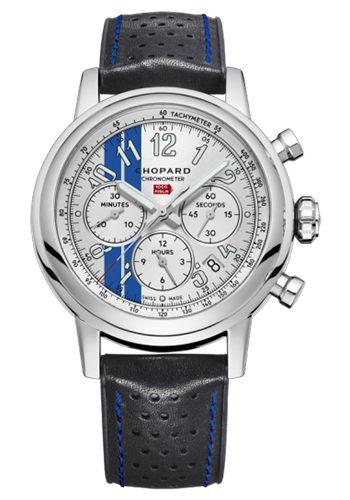
Imposing Arabic numerals underscore the sporty vibe of the watch. It also has rather chunky chronograph pushers, and a meaty “onion” crown. A good balance between the size of the pushers and the style of the case is a vital element in the overall style of the watch, and it’s something that is all too often overlooked. Chopard has understood this detail perfectly, and that’s worth pointing out.
The hands are also generously proportioned, and the second hand is finished with a red dot, complementing the Mille Miglia logo. The date is located between 4 and 5 o’clock (more on that in the Devil’s Advocate section).

Moving on to the movement: any watch that claims to be a tribute to fine engineering needs one of these. Here, we are in the presence of a chronograph-certified automatic movement which is partially visible through the sapphire caseback. I say “partially” because the back is also decorated with a blue “Racing Stripes” logo. We also find the legend “Limited Edition” and the number, because this timepiece is exclusive to the American market, and is available only from Chopard boutiques, in a limited series of 50.
If Le Mans Racing Stripes (another name for Cunningham Stripes) are not your bag, Chopard also offers a California Mille edition along the same lines, with a horizontal red band. But be warned – there are only 29 of these.

If you’d like to celebrate some of the other colours mentioned at the beginning of this Why Not, you should look at the Chopard Racing Colours collection, launched last year, which is still available. You can choose between red, silver, blue, yellow and green dials.
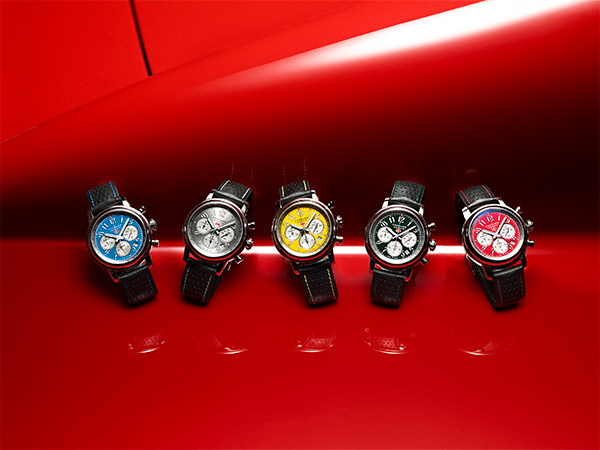
What does the devil’s advocate think?
His car is a 1969 Camaro Red Devil, which he would relish the opportunity to drag race against a Shelby Racing Stripes! But in the meantime, here are some details that might make this Chopard even more appealing.
First, the date. It clutters up the dial, and I don’t like its location. Why not keep things simple? Even if clients say they like it, why not try removing it from a future limited edition? Then there’s the famous blue stripes. I would have preferred these vertical stripes to be in the centre of the watch, rather than off to the side.
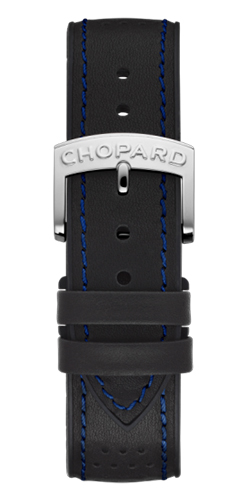
And finally, why not take the Cunningham analogy even further, by offering a white strap?
How to wear the Chopard Mille Miglia Classic Chronograph Racing Stripes with style?
With its Racing Stripes collection, Chopard inevitably calls to mind the picture of the gentleman driver.
Custom dictates that we begin with the shoes, which must obviously be Tod’s driving shoes. There’s such a wide choice that I’ll leave that up to you.
Moving onto the trousers, we need something light, preferably crease-resistant, and not too tight to prevent a suave entry into the cockpit of a vintage racing car. A pair of Cargos by Eleventy ticks all the boxes, and the white version looks particularly fetching.
Then we need a polo shirt, or rather, a popover. My choice would be the chambray version from Suitsupply.
We don’t need a sports jacket, but there are several other options: a Loro Piana bomber jacket (the Storm System in orange is superb), or a sleeveless number by Zegna in beige suede.
There’s one final must-have accessory: gloves! To be completely honest, I’ve never worn gloves for driving so I’m not sure what to recommend. But I’ve heard good things about the Stringbacks from Autodromo, and they certainly look the part.
Now you’re ready to jump into the racing car of your choice!
After a pitstop at Ford to admire the Shelby GT350, I return home with an idea...
… which is why I’m taking this opportunity to pass on a brief message to Mr Scheufele: could you please look into making a Michel Vaillant or Vaillante chronograph? Matt case, French Blue dial, white tachymeter, black subdials and a big number 11, as seen on the Vaillante Commando from 1975, my personal favourite. You have my number; don’t be a stranger!



